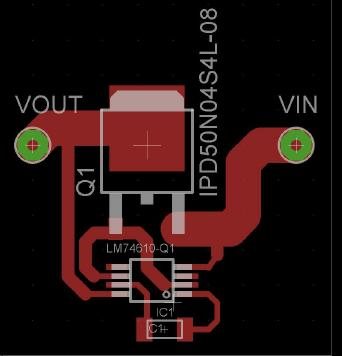Has anyone any experience with using LM74610-Q1 with Photo-Voltaic panels?
I wish to use LM74610-Q1's to 'OR' several 12V PV panels in parallel.
Using even schottky diodes isn't an option due to forward current power losses and associated heat. (the panels are 3Amp and 6Amp devices).
I believe I need to protect each panel from reverse current when maybe one panel is shaded and could be reverse biased creating a 'hot spot' and damaging the shaded panel.
However I am worried that the LM74610-Q1 may not detect a 'slow' change in reverse current (as would happen as a panel becomes shaded) and also ...if the panels don't all generate exactly the same voltage (even from new) could panels become permanently excluded from the array?
Any expert guidance or anecdotal experiences gratefully accepted.
Thanks in anticipation
Dave



